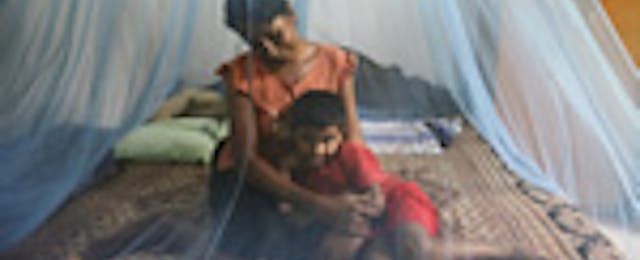
I was recently in Sri Lanka, where I was stunned to learn that cases of malaria there have gone from 260,000 in 1999 to not one indigenous case this year. Shortly after I got back, I was thrilled to read about the successful new trials for a malaria vaccine, thanks in large part to U.S. investments through the National Institute of Allergy and Infectious Diseases, the Walter Reed Army Institute of Research and the Naval Medical Research Center.
But the truth is that the success I had just seen in Sri Lanka wasn’t due to a flashy new discovery, but rather to the smart and steady application of proven methods—insecticide-treated nets, indoor spraying, community education and surveillance. One of the most critical means of helping to move us toward malaria control is this kind of sustained dedication—and the enthusiasm and support that makes it possible.
There is still a long way to go to confirm this early-stage trial’s results and bring a vaccine to market. And as the scientists and government agencies move ahead, the rest of us have work to do, too. It’s what we do now to shrink the malaria map that could position a future vaccine to be a game changer.
This week at the Social Good Summit in New York, I was lucky to have the chance to sit down with people who are advancing the fight against malaria right now in the halls of Congress, in the private sector and among a thriving grass-roots movement. Using the tools we already have, the world has worked to decrease the malaria mortality rate 26% between 2000 and 2010. The number of cases fell by half during the same period.
The U.S. government has been essential to this success—not only through the discovery of new technologies, but also through the delivery of those tools to people most in need. The Global Fund to Fight AIDS, Tuberculosis and Malaria, the world’s largest public health financier, and the U.S. President’s Malaria Initiative together account for about three-quarters of international financing for malaria.
The U.S. commitment is strong thanks to leaders like Rep. Gregory Meeks (D-NY), who was with me at the Social Good Summit in New York. His work on the bipartisan Congressional Caucus for Malaria and Neglected Tropical Diseases sets a strong example among fellow policymakers.
But the government isn’t at it alone. The Social Good Summit is about uniting people from all walks of life to tackle the world’s biggest challenges. The fight against malaria requires that we come together in support of the things we know work, such as the nets that protect people from the mosquitoes that carry malaria.
That’s why I was also delighted to share the stage with Mikkel Vestergaard Frandsen, who changed the course of his family’s textile business in order to bring nets to those at risk—and Edson Kodama and his daughter, Naomi, who have also made this issue a family affair, by raising $1.8 million for Nothing But Nets through the Junior Chamber International.
Actions like these sustain the fight and encourage investment from all corners—and will save countless lives from the deadly effects of malaria in the years ahead. As the world continues to rally against the disease today, our work must also be positioning the new vaccine—or another one like it—to deliver a final, knockout blow to malaria.